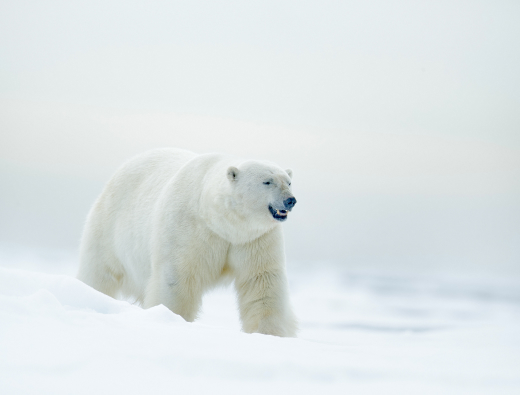The sensor solution provider HENSOLDT provides its technological expertise for the protection of threatened species. The company signed an agreement with the nonprofit organization Polar Bears International to initiate a pilot project aimed at providing sensor-based early warning of polar bears entering settlements to give communities advance warning and time and to reduce conflict. The Polar Bear Warning Radar (PoWR) pilot project is being carried out by Polar Bears International in the “Polar Bear Capital of the World” Churchill, Manitoba, Canada on the shores of Hudson Bay.
Polar bears live on the surface of the Arctic sea ice, where they surround themselves, mate, and sometimes even reside and hunt their main prey, ringed and bearded seals. In the Hudson Bay region, global warming is causing sea ice to melt earlier in summer and freeze later in autumn, forcing polar bears to stay longer on the mainland. As a result, polar bears in this region of the Arctic spend about a month longer on land without access to their main food sources.
As a result of these longer fasts, polar bears are increasingly coming to communities in search of food. Many communities have wildlife managers who are notified to take action to protect humans and animals. However, the visual observations at night or in storms are very limited.
“This technology works day and night and in all weather conditions and gives the community members the means they need to stay protected so that we can protect both the polar bears and the people,” says Sarah Sterzl, sustainability officer at HENSOLDT group and project manager of PoWR. “Therefore, the project fits perfectly with our mission to protect not only society, but also our planet. The staff and scientists at Polar Bears International are recognized experts in this field, so we are proud to be working with them on this project. ”
“We are excited to be working with HENSOLDT to develop this important technology,” said Geoff York, Senior Director of Conservation at Polar Bears International. “Innovation and the creative use of technology are the keys to the success of our protection efforts on site. It is important that we develop tools to protect humans and polar bears as society moves forward to address global warming. “Polar Bear Warning Radar” consists of a ground surveillance radar in combination with a camera that makes it possible to detect bears at a distance of four to five kilometers. The combination of the radar with a camera brings the advantages of an all-weather operation with precise location and identification over long distances.

